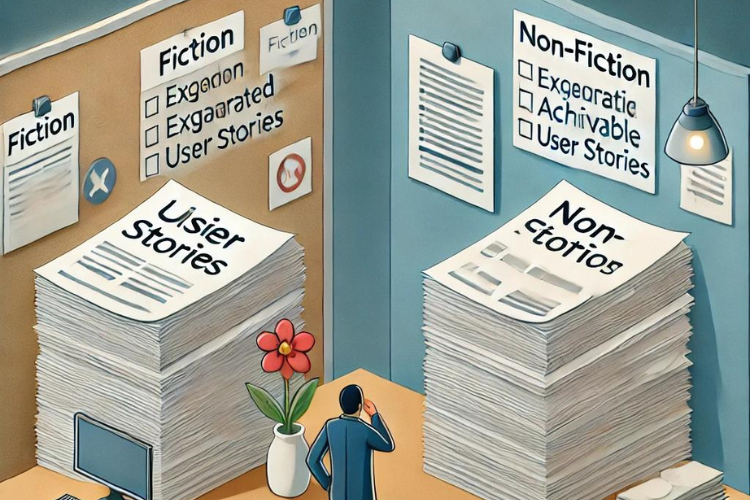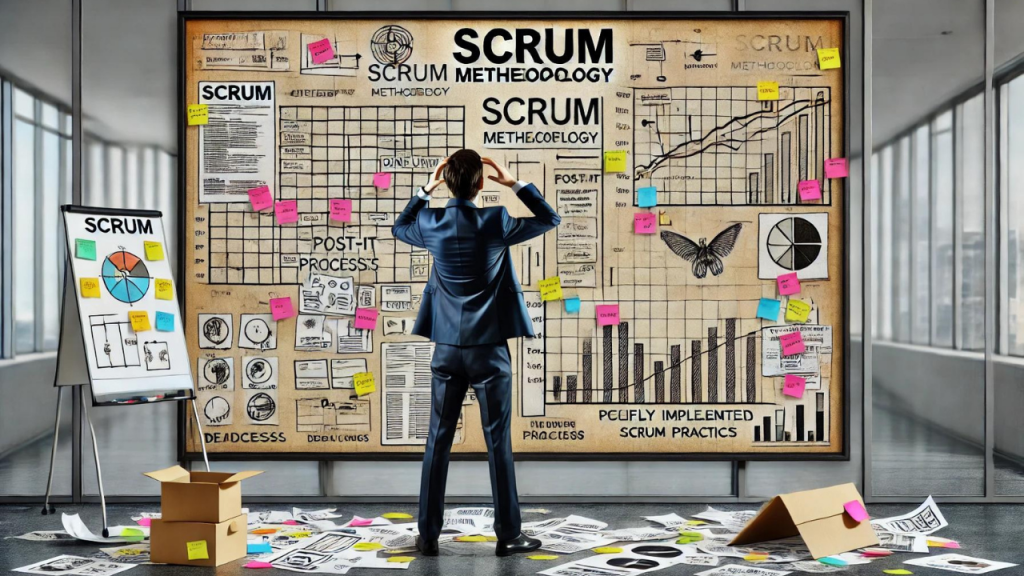SCRUM is a widely adopted framework in the software development world, promising to streamline processes and enhance productivity. However, as someone with over 25 years of experience in software development and over a decade of executive leadership, I’ve seen the cracks in its promise. I’m Spencer Thomason, a Fractional CTO at StartupHakk, where we love training software developers and building custom software solutions. And today, I want to share with you why I hate SCRUM and find it, frankly, ridiculous.
Let’s dive into 10 real-life reasons why SCRUM often fails to deliver, despite its popularity.
1. The Daily Stand-up Comedy
The daily stand-up meeting is supposed to be a quick, efficient check-in to help teams align. In theory, it’s brilliant—short updates on what you did yesterday, what you’re working on today, and any blockers. But in practice? It often turns into an unproductive cycle.
Instead of meaningful updates, these meetings become repetitive and frustrating. How many times can you hear “I’m still working on the same ticket” before you want to scream? Developers are forced to pause their flow for a meeting that rarely adds value.
Time is precious in development. Daily stand-ups should respect that, but too often, they waste it.
2. Sprint Planning Madness
Sprint planning is supposed to give structure to the upcoming two weeks. It sounds great in theory: the team gathers to plan and prioritize work, ensuring everyone is aligned. But here’s the problem—it often becomes a marathon of debate with no clear resolution.
These meetings can drag on for hours, with team members arguing over priorities, estimates, and what can realistically be accomplished. In the end, very little actual planning happens. It’s like trying to herd cats—everyone’s all over the place.
Sprint planning is essential, but when it turns into a drawn-out discussion, it loses its purpose.
3. The Myth of the Burndown Chart
Ah, the burndown chart—a favorite visual in SCRUM. It’s designed to track the team’s progress, showing how much work remains in the sprint. But here’s the problem: it’s rarely accurate.
Tasks get completed at different rates, unforeseen issues arise, and soon, the chart looks like a random line graph with little relation to actual progress. Watching the burndown chart is like watching a bad horror movie—you know something is going wrong, but you don’t know when the disaster will strike.
In the end, the burndown chart becomes more of a stress-inducing tool than a helpful one.
4. The Sprint Retrospective: A Lesson in Futility
The sprint retrospective is a time for the team to reflect on the sprint: what went well, what didn’t, and how things can improve. In theory, this is a fantastic way to continuously improve. But in reality, it often turns into a gripe session with no real results.
Teams often rehash the same problems, with little follow-up or resolution. It’s like being stuck in a loop, constantly talking about the same issues without ever solving them.
Continuous improvement is crucial in software development, but retrospectives often fall short of driving meaningful change.
5. User Stories: Fiction or Non-Fiction?
User stories are meant to describe features from the end-user’s perspective. They are a cornerstone of SCRUM, designed to ensure that development is aligned with user needs. But here’s the issue: writing good user stories is an art, and not everyone is an artist.

Poorly written user stories are more common than you’d think. Misinterpretations happen, leading to wasted effort, rework, and frustration. It’s like playing a game of telephone—by the time the story reaches the developer, it’s distorted beyond recognition.
Clear communication is essential, but user stories often fail to deliver it.
6. The Scrum Master: The Zealot in the Room
Every SCRUM team has a Scrum Master. Their job? To make sure the team follows SCRUM practices. But sometimes, the Scrum Master becomes a zealot, enforcing SCRUM rituals with the fervor of a drill sergeant.
Flexibility is key in development, but some Scrum Masters prioritize SCRUM’s rules over the team’s actual needs. Instead of adapting the process to suit the team, they enforce rigid guidelines that hinder progress.
It’s like having a gym coach who cares more about counting reps than whether you’re actually getting stronger. Inflexibility can kill team morale and productivity.
7. The Sprint Review: A Dog and Pony Show
The sprint review is where the team showcases the work completed during the sprint. This is supposed to be a time for celebration and feedback. However, in reality, it often turns into a performance—a dog and pony show, if you will.
The team scrambles to make everything look polished and perfect, even if it’s not. Corners get cut, or unfinished work is presented as complete, all to maintain appearances. It’s like putting lipstick on a pig and hoping no one notices.
Genuine feedback is essential for growth, but when the focus is on making everything look perfect, real progress takes a backseat.
8. Velocity: The False Idol
In SCRUM, teams often measure their productivity using velocity, which tracks how much work they complete in a sprint. But here’s the catch—velocity can easily become a false idol.
Teams might inflate their estimates or rush through tasks just to boost their velocity numbers. It’s like measuring your fitness by how many times you visit the gym, rather than how much healthier you’ve become. Over time, this focus on velocity can lead to lower quality work and declining morale.
Productivity should be about quality, not just quantity. Unfortunately, SCRUM often turns it into a numbers game.
9. The Never-Ending Sprints
SCRUM’s sprint cycle can feel like a relentless treadmill. Just as you finish one sprint, another one begins, leaving little time for reflection or recovery. This constant pace can lead to burnout, diminishing creativity and innovation.
Developers need time to think, experiment, and innovate, but the non-stop pressure of sprint cycles leaves little room for that. It’s like running a marathon without a finish line—eventually, you’re going to hit a wall.
Balance and pacing are crucial for sustainable productivity, but SCRUM often pushes teams beyond their limits.
10. The Overemphasis on Process
Finally, SCRUM often places an overemphasis on the process itself, rather than the outcome. Teams get so caught up in the rituals, meetings, and artifacts that they lose sight of the real goal—delivering valuable software.

It’s like focusing more on the ingredients than the dish you’re trying to cook. The process should serve the outcome, not the other way around. But in SCRUM, the process often becomes the priority, leaving the product to suffer.
Software development is about creating something valuable, not just following a checklist.
Conclusion
SCRUM has its merits, but it’s far from perfect. From the endless meetings to the unrealistic focus on velocity, it can often feel like more of a hindrance than a help. Development teams need flexibility, creativity, and time to innovate, but SCRUM’s rigid structure often stifles that.
What are your thoughts on SCRUM? Do you agree or disagree with these points? I’d love to hear your feedback. At StartupHakk, we’re passionate about helping software developers grow through our coding bootcamps and custom software solutions. Feel free to reach out, and let’s build something amazing together!




